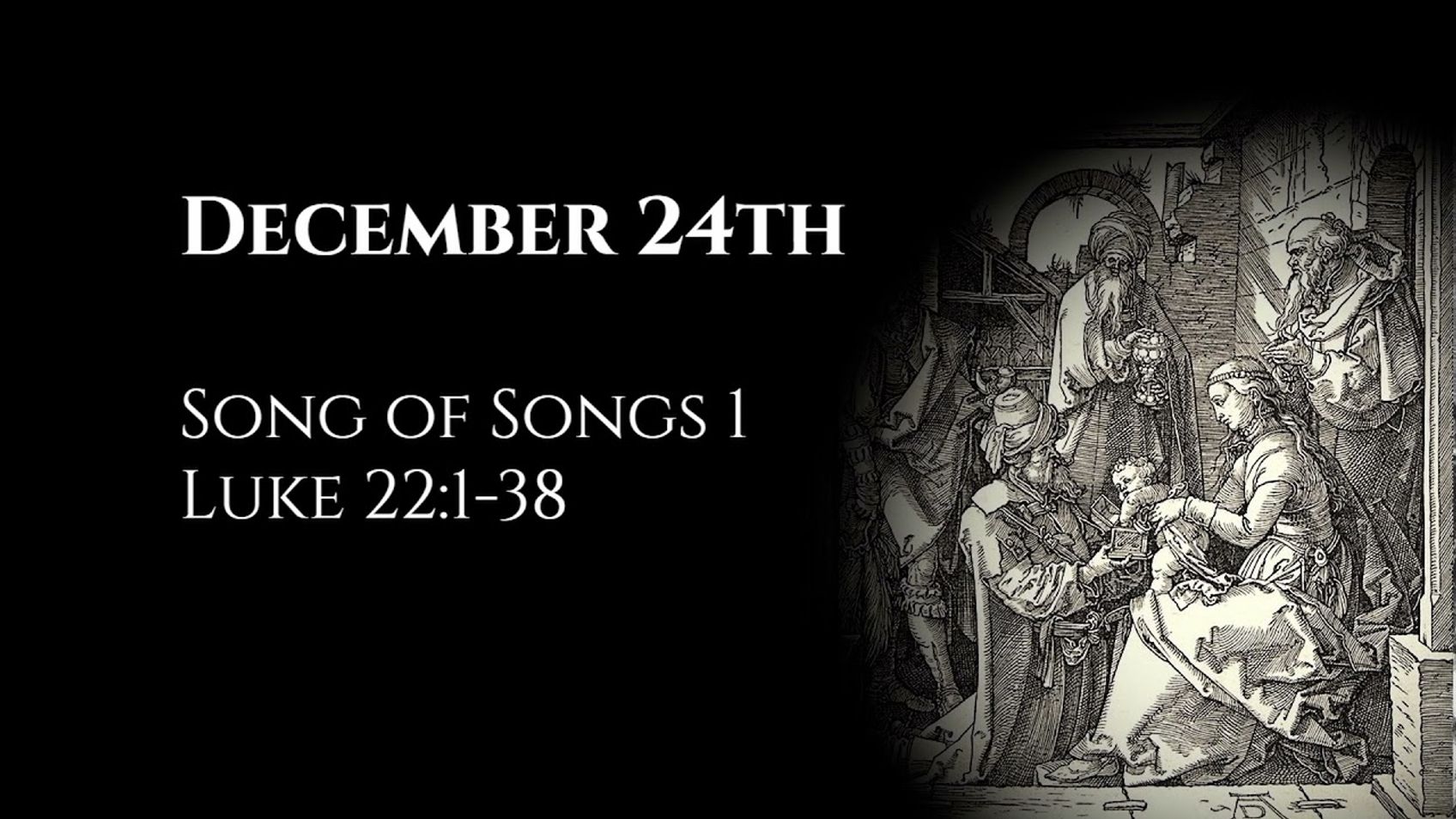December 24th: Song of Songs 1 & Luke 22:1-38
December 23, 2021

Alastair Roberts
Let him kiss me with the kisses of his mouth! The Last Supper.
My reflections are searchable by Bible chapter here: https://audio.alastairadversaria.com/explore/.
If you are interested in supporting this project, please consider supporting my work on Patreon (https://www.patreon.com/zugzwanged), using my PayPal account (https://bit.ly/2RLaUcB), or buying books for my research on Amazon (https://www.amazon.co.uk/hz/wishlist/ls/36WVSWCK4X33O?ref_=wl_share).
You can also listen to the audio of these episodes on iTunes: https://itunes.apple.com/gb/podcast/alastairs-adversaria/id1416351035?mt=2.
More From Alastair Roberts
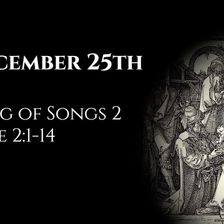
December 25th: Song of Songs 2 & Luke 2:1-14
Alastair Roberts
December 24, 2021
Arise, my love, my beautiful one, and come away! The birth of Jesus Christ.
My reflections are searchable by Bible chapter here: https://audio.alasta
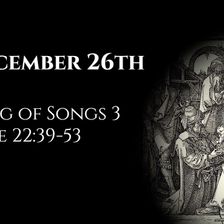
December 26th: Song of Songs 3 & Luke 22:39-53
Alastair Roberts
December 25, 2021
Solomon's palanquin coming from the wilderness. Arrest in the Garden of Gethsemane.
My reflections are searchable by Bible chapter here: https://audi
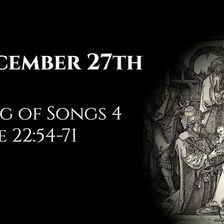
December 27th: Song of Songs 4 & Luke 22:54-71
Alastair Roberts
December 26, 2021
You have captivated my heart, my sister, my bride! Peter's denial.
My reflections are searchable by Bible chapter here: https://audio.alastairadversa
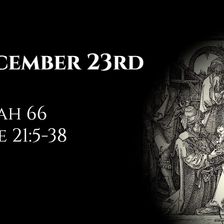
December 23rd: Isaiah 66 & Luke 21:5-38
Alastair Roberts
December 22, 2021
Zion gives birth to a new nation. The Olivet Discourse.
My reflections are searchable by Bible chapter here: https://audio.alastairadversaria.com/exp
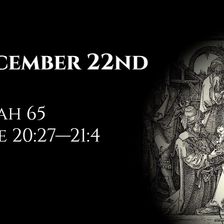
December 22nd: Isaiah 65 & Luke 20:27—21:4
Alastair Roberts
December 21, 2021
A new heavens and a new earth. Jesus challenged by the Sadducees concerning the resurrection.
My reflections are searchable by Bible chapter here: ht
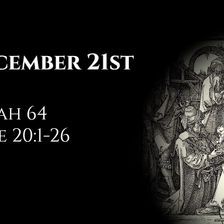
December 21st: Isaiah 64 & Luke 20:1-26
Alastair Roberts
December 20, 2021
Oh that you would rend the heavens and come down! The Parable of the Wicked Tenants.
My reflections are searchable by Bible chapter here: https://aud
More on OpenTheo

How Can I Improve My Informal Writing?
#STRask
October 6, 2025
Question about how you can improve your informal writing (e.g., blog posts) when you don’t have access to an editor.
* Do you have any thoughts or

What Tools of Reasoning Help You Know What’s True, Right, and Good?
#STRask
December 4, 2025
Question about what tools of reasoning help us determine whether something is true or false, right or wrong, good or bad before bringing Scripture int

If We Don’t Need to Learn to Hear God’s Voice, How Do You Explain These Verses?
#STRask
September 11, 2025
Questions about why, if we don’t need to learn to hear God’s voice, there’s a command to earnestly desire the gift of prophecy, why we would need to l

How Did a Fisherman Write the Book of Peter?
#STRask
September 18, 2025
Questions about how a fisherman could have written the book of Peter, why people say that not mentioning the destruction of the temple indicates an ea

Should You Believe Things You Can’t Fully Comprehend?
#STRask
September 25, 2025
Questions about whether you should believe things you can’t fully comprehend, whether it’s just an arbitrary escape hatch to say God doesn’t require a
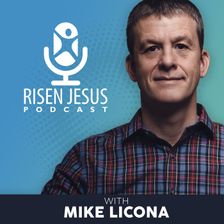
Since Most People Are Wrong When They Make Supernatural Claims, Why Didn't God Do Better?
Risen Jesus
September 17, 2025
Dr. Matthew McCormick, a philosophy professor at California State University, Sacramento, doesn’t believe that there is satisfactory historical eviden

Is It a Sin to Feel Let Down by God?
#STRask
November 6, 2025
Questions about whether it’s a sin to feel let down by God and whether it would be easier to have a personal relationship with a rock than with a God

“Jesus Had Two Dads, and He Turned Out Just Fine”
#STRask
August 28, 2025
Questions about how to engage someone wearing a button that reads, “Jesus had two dads, and he turned out just fine,” and how to be kind and loving wi

How Can I Showcase God’s Goodness When I’m Struggling in My Suffering?
#STRask
September 8, 2025
Questions about how to showcase God’s goodness when we’re really struggling in our suffering, an explanation of God’s response at the end of the book

When Is It Time to Walk Away from a Conversation?
#STRask
September 1, 2025
Questions about how to discern when it’s time to walk away from a conversation, and how to cope with people charging you with being prideful and legal

Did God Create Us So He Wouldn’t Be Alone?
#STRask
November 3, 2025
Questions about whether God created us so he wouldn’t be alone, what he had before us, and a comparison between the Muslim view of God and the Christi

Mike Takes on World Ranked Debator on the Topic of Jesus' Resurrection from the Dead
Risen Jesus
August 27, 2025
Dr. Shane Pucket was ranked the 32nd best debater in the world in 2012. That year, he faced off against Dr. Michael Licona at Monroe Baptist Church in

Do Christians Need to Believe that Jesus was Raised Bodily from the Dead? Licona vs. Patterson
Risen Jesus
October 15, 2025
In this episode, Dr. Stephen Patterson, New Testament professor at Eden Theological Seminary, argues against the bodily resurrection of Jesus, contend

How Do We Advocate for Christian Policy Without Making the Government Interfere in Every Area of Life?
#STRask
November 20, 2025
Questions about how to advocate for Christian policy without making the government interfere in every area of life, and the differences between the mo

What Are Some Good Ways to Start a Conversation About God with Family Members?
#STRask
October 30, 2025
Questions about how to start a conversation about God with non-Christian family members, how to keep from becoming emotional when discussing faith iss
